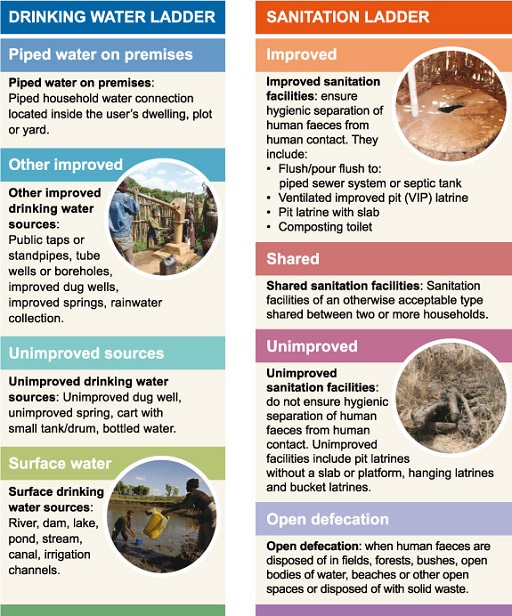1.1.1 Improvements in water and sanitation
The goal of water and sanitation projects in Ethiopia and throughout the world is to bring benefits to the lives of people by improving the supply of safe water and access to sanitation. Assessing the status of water and sanitation provision and measuring improvement requires a standardised set of definitions of the different types and levels of service. The Joint WHO/UNICEF Monitoring Programme (JMP) is mandated to give globally recognised definitions to the terms. Figure 1.1 clarifies the terms and presents them as ladders of improvements in water and sanitation.

Figure 1.1 uses the terms ‘drinking water ladder’ and ‘sanitation ladder’. What does the concept of a ‘ladder’ mean to you and why do you think it is used in this way?
A ladder is equipment for climbing from one level to a higher level by a sequence of rungs or steps. The use of ‘ladder’ in describing water supply and sanitation indicates that there is a progression from the basic unimproved provision in a sequence of steps up to improved services at the top of the ladder.
The idea of the ladder provides a useful measure of progress. Imagine you were employed as a community WASH worker with responsibility for promoting WASH improvements in your community. How do you think you might use the ladder concept in practice? You would need to start your work by collecting data about the WASH services that the community is using before you begin your promotional work. Once you have gathered this data, by using your knowledge of the sanitation and water supply ladders, you can identify where the majority of people are placed on the ladder. This will enable you, in collaboration with other partners, to come up with a plan to move the community members up the ladder.
1.1 What is WASH?
